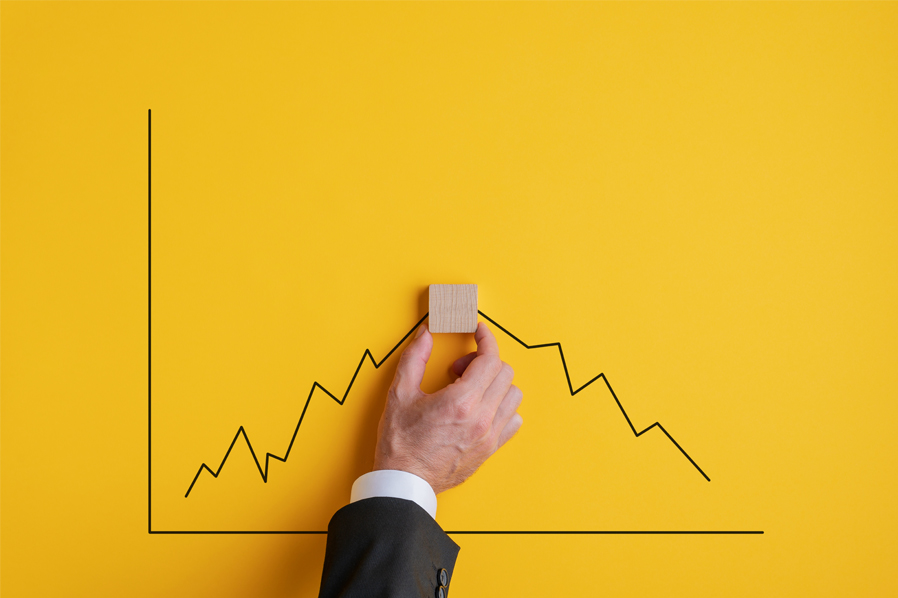We’ve frequently heard about the term inflation when talking about economic stability. It describes a declining economy in one area. Inflation impacts the consumers and business owners in running the economy.
Inflation can be prevented or at least minimized. From the public perspective, inflation can be suppressed by living providently and start planning for better finances.
About Inflation
Inflation is a condition that describes the increase in the prices of goods and services over a given period of time. It is composed of a high money supply in the market that is not directly proportional to the goods produced. Unbalanced supply and demand resulted in goods prices soaring.
However, the increase in prices of one or two goods does not render inflation. Inflation is measured through systemic measures over a wider economy. Statistics Indonesia (BPS) is the party responsible for inflation calculation.
To calculate inflation, BPS employs the Consumer Price Index (IHK) that they obtained from the Cost of Living Survey (SBH). BPS conducts the survey regularly from the smallest local economy to the national level. The index will use seven expenditure groups as follows:
- Foodstuffs
- food, beverages, and tobacco
- Housing
- Apparel
- Medical Care
- Education and Sports
- Transportation and Communications
What Causes Inflation?
Inflation can occur due to many factors. Here are the causes of inflation:
1. Increased Demand
Inflation is closely associated with supply and demand. Demand can suddenly increase due to a few contributing factors. The goods you’re looking for could be essential commodities that must be met daily.
The limited supply of a good that makes it scarce can cause increased demand. Some speculators hoarding goods leading to a decreased supply in the market.
2. Soaring Cash in Circulation
In the financial strategy, the government could have printed new money to increase the money supply. This step was taken to cover the budget deficit and fuel the economy. The reason is the more money in circulation, the higher the consumption.
Unfortunately, it causes an increase in the prices of goods and services. The more money printed to finance the deficit, the higher the cost of daily essentials will be.
3. Increase Production Costs
Consumer price increases may occur due to increased production costs. These production costs include raw materials, labor costs, and distribution costs. The most commonly reported increased production cost is due to the scarcity of raw materials in the market.
Such condition occurs more frequently in developing countries. It is because many of these countries haven’t been able to produce the raw materials themselves that they have to import from other countries.
Types of Inflation
Inflation can be distinguished by the severity it causes. The types of inflation are as follows:
1. Mild Inflation
Mild inflation or creeping is prevalent throughout the world. The inflation is quite low, below 10% per year. Creeping is still fairly well controlled.
2. Moderate Inflation
It’s a red flag when an economy passes through this stage. The average increase in prices reaches 10-30% per year. If it gets out of hand, it will impact the welfare of the people.
3. Galloping Inflation
Indonesia experienced severe inflation during the monetary crisis in 1998. The price increases between 30—100% per year. During these times, bank interest rates fall and people are not interested in saving their money.
4. Hyperinflation
Hyperinflation refers to the surge of prices above 100% per year. It could lead to economic catastrophe and is difficult to control despite fiscal and monetary policies.
How to Overcome Inflation
Everyone has an important role to play in overcoming inflation. Here are some tips to follow:
1. Get Rid of Consumptive Behavior
Suppressing inflation can be done by living providently. Buy goods according to your needs and manage the spending. Avoid excessive purchases that lead to a scarcity of goods, especially basic necessities.
2. Find Substitutes
Substitute products are goods that have properties and functions similar to the main products. Using substitutes can help reduce the demand for a good, keeping the prices stable.
3. Start Saving
Secure your finances by utilizing banking products. Start saving regularly using time savings. If you have more to spend, you might want to try a deposit account.
4. Invest
Investing is one of the best ways to combat inflation while managing wealth properly. You can start investing in mutual funds and bonds. These two types of investments are quite safe for novice investors.
5. Empowering MSMEs
MSMEs play a significant role in driving the economy. That’s why it is necessary to empower the MSMEs sector. Start shopping at small local shops or minimarket in your vicinity and buy other locally produced products.
Many local products at affordable prices are available for grab. For those who want to shop for local products, join the Bangga Lokal program. The Bangga Lokal supports Indonesian entrepreneurs with the spirit to promote local industry & economy. Let’s take a peek at their creativity & local products here.

